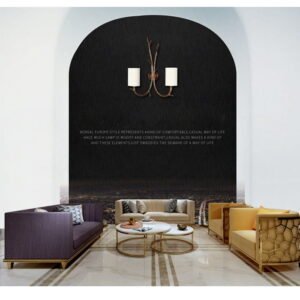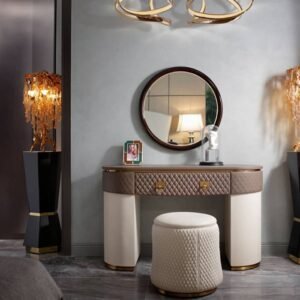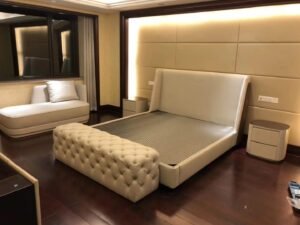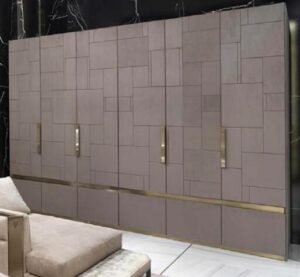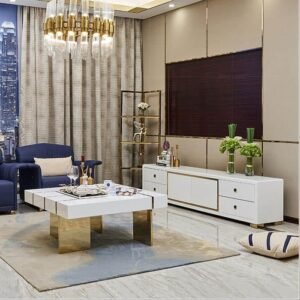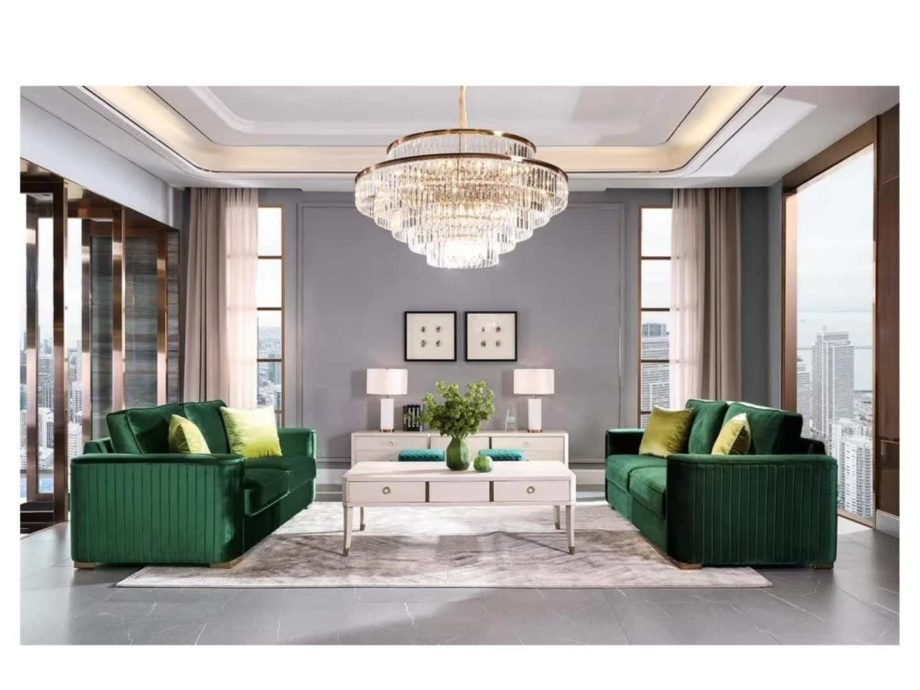4 major trends in the development of the furniture industry
China’s furniture industry has a low barrier to entry, and the reduction in compression costs has become the killer of many new small manufacturers entering the market. With the improvement of the packaging, logistics and e-commerce environment of furniture products, the competition of furniture brands has expanded from regional competition to nationwide competition. Some brands with low-cost competitive advantages can always find similar prices lower than their own prices. Competing products, even many high-end furniture brands have been subject to more and more competition and pressure.

“What should Chinese furniture do?” “Where is the breakthrough in the furniture industry?” has become a common problem in many furniture companies. There are two such commercial classics that say: “There are no industries that don’t make money, only those that don’t make money.” “Corporate bosses must walk down and look up at the sky.” Chinese furniture brands must think about long-term development. Strategic issues, get rid of short-sighted price wars, don’t be threatened by temporary market hotspots, and focus on R&D and innovation in line with the development trend of the furniture industry, in order to find your own sustainable development path.
The following is a brief introduction to the four major trends in the future development of the furniture industry:
1. The application of new materials will profoundly change the furniture industry
Looking at the development of the furniture industry, every major leap in the furniture industry is inseparable from the use of new materials and technology. In the long millennium, easy-to-process plant materials such as wood and bamboo have become the main materials for making furniture. Most of the traditional furniture in the past millennium is wooden furniture. In modern times, steel and alloy materials have entered the furniture industry, steel-wood structure. The furniture began to appear, and the function, shape and appearance of the furniture changed a lot. The extensive use of polymer materials represented by PE, PVC and ABS promoted the rapid iteration of the furniture industry and brought about profound changes in four aspects. .
The first is the emergence of a large number of new hybrid materials. Polymer materials can be used alone in furniture, or can be polymerized with other powdered objects to form new materials, such as wood powder, rice husks, and straw, which are made of wood-plastic materials. Stone plastic materials: combined with fly ash, the birth of carbon gold materials and so on. These wide variety of new materials have a wide variety of physical properties and are used in the manufacture of special furniture for furniture manufacturing, especially in special environments.

The second is that furniture materials can be recycled from natural resources to green. Many modified new materials with the participation of polymer materials have the property of being recyclable. Once the furniture is no longer used, it can be broken into powder and then pressed into a plate to make new furniture.
The third is to solve the problem of formaldehyde that has plagued the furniture industry for a hundred years, making healthy zero formaldehyde possible. Furniture transitions from solid wood furniture to modern MDF furniture. MDF is made of resin adhesive bonded wood chips. The resin adhesives inevitably contain formaldehyde. The furniture and decoration materials made of MDF are distributed in the residents’ homes. It poses a great threat to human health and has become a nightmare for the modern furniture industry. The new type of plate made of polymer material combined with powder such as wood chips, because the polymer material does not contain formaldehyde, these new material plates and manufactured furniture have almost no formaldehyde release, ensuring people’s health.
The fourth is to change the criteria for judging the pros and cons of furniture from material value to use value. In the age of wood-based furniture industry, the functions of furniture are the same, then the standard for judging the merits of furniture is not only the workmanship, but also the preciousness of wood materials. The furniture made of precious wood such as red sandalwood, huanghuali, mahogany and eucalyptus not only It has practical functions and is also given the function of maintaining and increasing value. As new materials enter the field of furniture production, the furniture has more styling and more functions, and there is a clear difference in the comfort of use. The standard of furniture consumption has been purchased after 90s and after 00. From the value of expensive materials to the comfort and aesthetics.
Furniture companies should pay attention to the use of new materials in products, and turn the focus of research and development into the aspects of creativity, styling, appearance, function and comfort of use, which will have more room for development.
2. Ergonomics is widely used in the furniture industry
The demand for modern consumer furniture consumption is shifting from “some use” to “useful”. All the furniture is finally used by people. Comfort will become one of the important criteria for evaluating the quality of furniture. Especially the furniture that people often use in tables, chairs, bedding, etc., the requirements for comfort are more strict. Ergonomics (or ergonomics) is more and more closely integrated with the furniture manufacturing industry. It is through scientific large-scale experiments that solve the furniture to make people more comfortable, more comfortable to sit, and more comfortable to lie down. problem.
Whether residential furniture or office furniture is rarely used by one person, but shared by many people, even if it is used by one person, the size and height of the furniture are constantly changing during the age of children’s growth. People of different heights, fatness, and habits have different requirements for the same kind of furniture. They are separated from the specific users. The so-called engineering design of furniture is like a castle in the air. Therefore, more and more furniture integrates the mechanical adjustment function into the furniture design, so that a piece of furniture can adapt to the specific needs of each person through reasonable adjustment, so that each user can experience the comfort as tailor-made. Feel.

This adjustable function design is more obvious in the furniture of the table and chair. The traditional fixed furniture is modified and upgraded in terms of adjustable functions to meet the needs of the user’s engineering comfort. It will be the success of the furniture product. One of the important breakthrough points.
3. Meet the needs of customized furniture
With the improvement of people’s living standards, the awakening of the new generation of young people’s individual consciousness; with the wide application of new materials, new technologies and new processes, the sales channels of e-commerce and other sales are becoming shorter and shorter, the cost of personalized production of furniture and The cost of circulation continues to decrease. 4 major trends in the development of the furniture industry,Meeting the needs of customized furniture has become an important breakthrough in the transformation of many traditional furniture companies.
There are two main ways to meet the needs of custom homes.

The first is to provide the housing data or the specific needs of a certain kind of furniture. The furniture factory issues the design draft and renderings. After the customer approves, the factory carries out customized production. The material, style, structure, appearance and color of the furniture can be individually customized. With digital color printing technology, even the patterns or photos requested by customers can be printed on the furniture. 4 major trends in the development of the furniture industry,This furniture customization method is characterized by the fact that the factory undertakes almost all the work in the customization process, and the labor cost and time cost are high.
The second way is to develop modular furniture. Modular furniture refers to furniture that allows consumers to assemble and adjust the basic furniture modules of different functions, specifications and colors according to their actual needs and creativity, and to meet the individualized requirements of different functions of different spaces. Manufacturers only need to produce standardized furniture modules, and hand over the personalized work process to the customer or assist the customer.
Modular furniture has long been used in wooden furniture. Some furniture factories produce wooden lattices of various kinds and colors. Consumers use connectors, door panels, handles and other accessories to assemble various small wooden formats into larger storage spaces. 4 major trends in the development of the furniture industry. However, due to material limitations, customers still need to use the installation tools and hardware accessories such as screwdrivers and hammers to complete the installation. The weight is heavier and the disassembly and assembly is more complicated.

4. The era of intelligent furniture is coming soon
Traditional furniture is a fixed structure, without a soul, people can only passively adapt to the existing furniture; modern furniture is more and more integrated with the ergonomic adjustment function, people can manually adjust various indicators, making the furniture more suitable for personal use In the near future, with the enhancement of smart chip functions, cost reduction, data transmission more and more convenient, and the increase of information receiving and processing terminals, we can foresee that intelligent furniture is about to appear, intelligent furniture through data acquisition, operation Handling, self-regulating and actively adapting to the various needs of the owner.
Let’s imagine the future of intelligent furniture.
In the future, smart bed will generally have a built-in carbon fiber infrared heating system. Before the owner needs to go to bed, the smart bed will heat the bed to the proper temperature in advance and remind the owner to go to bed at a fixed bedtime. The smart bed monitors various physiological indicators such as blood pressure, pulse, and sleep state during the sleep of the owner. Together with the smart bracelet worn by the owner during the day, the data is traditionally transmitted to the intelligent terminal of the community doctor, and the doctor’s health advice is passed through the mobile phone, PC, and the like. Feedback to the owner in real time.

The future smart bookshelf will automatically enter the relevant information of the owner’s books, count the reading frequency and preferences, and recommend the new book information to the owner by connecting the mobile APP. If the owner sets a plan to keep reading, the bookshelf will remind the owner to read at a fixed time through the terminal.
The future smart student desk chair only needs parents to input the basic body information such as the child’s height and leg length, and will automatically adjust the height of the seat and desk according to ergonomic principles, and also according to children’s writing, reading or painting. The activity automatically adjusts the tilt angle of the table, and promptly reminds the child to maintain a correct sitting posture when the child is leaning forward, the eyes are too close to the book, and the girl is in a bad posture. If the child is still not seated after repeated reminding, the smart table and chair will pass the mobile phone. Wait for the terminal to report to the parents.
The combination of technology such as mechanical systems, control systems, information processing transmission systems and traditional furniture will create a wider range of scenarios and application imagination. Perhaps we think that modern furniture is dragging a power cord is a very normal thing.



